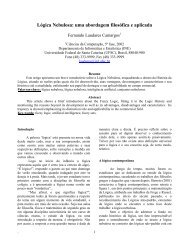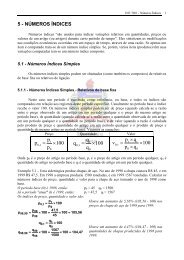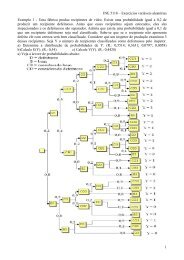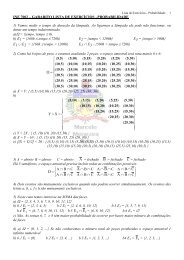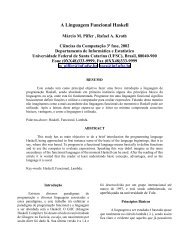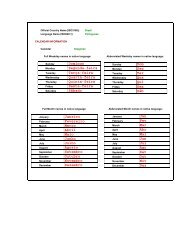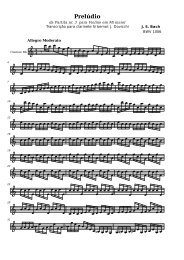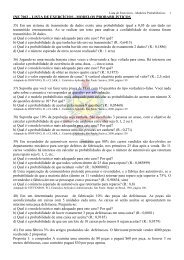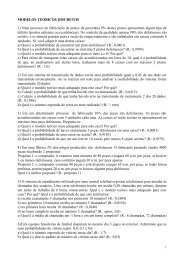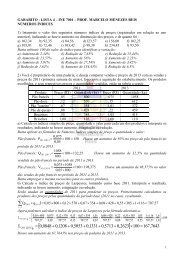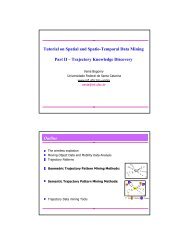Anais do IHC'2001 - Departamento de Informática e Estatística - UFSC
Anais do IHC'2001 - Departamento de Informática e Estatística - UFSC
Anais do IHC'2001 - Departamento de Informática e Estatística - UFSC
Create successful ePaper yourself
Turn your PDF publications into a flip-book with our unique Google optimized e-Paper software.
<strong>Anais</strong> <strong>do</strong> IHC’2001 - IV Workshop sobre Fatores Humanos em Sistemas Computacionais 233<br />
3. what type of mouse interaction protocol to implement to direct learners attention<br />
towards the essential aspects of a concept.” [Sedig et al., 2001, p. 55].<br />
The next section will advance some steps in the direction of answering the above<br />
questions, resorting to a semiotic analysis of the ST interface.<br />
A Semiotic Account of the Super Tangrams’ Interface<br />
The primary theoretical reference of this analysis will be a number of sign classifications<br />
proposed by Peirce [Peirce, 1931-58]. Consolidated accounts of the main aspects of<br />
Peircean Semiotics [Nöth, 1998; Danesi & Perron, 1999] have been used to organize our<br />
analysis and to lead us more effectively to some interesting conclusions.<br />
HCI literature <strong>do</strong>es not provi<strong>de</strong> as many instances of sound semiotic accounts as the<br />
generalized use of such words as icons, indices and symbols would lead us to believe. In<br />
contemporary Semiotics, these terms have technical meanings that originate from one of<br />
the numerous dimensions of sign classifications proposed by Peirce, namely that which<br />
relates different possibilities of representations (representamina) to three universal<br />
phenomenological categories (firstness, secondness, and thirdness). Peirce proposed that<br />
these radical categories could be used to organize all human experience in the world.<br />
Firstness is the category of immediate perception that seizes the presence of phenomena,<br />
but <strong>do</strong>es not relate them to anything else. An example of firstness is the perceptual quality<br />
of redness that emanates from whatever is red. Secondness is the category of association<br />
between two phenomena. Examples of secondness are the (causal) association between rain<br />
and wetness and the (contiguity) association between roads and vehicles. Thirdness is the<br />
category of chained associations, among three or more different phenomena. An example<br />
of thirdness is the (inferential) association that binds the proverbial mortality of Socrates<br />
with his being human and with humans being mortal, found in most introductory lessons to<br />
<strong>de</strong>ductive reasoning. However, thirdness may occur in non-syllogistic chains of<br />
associations such as is the case with the relation between cars, roads and traveling, for<br />
example.<br />
Before we proceed with semiotic <strong>de</strong>finitions, we should go back to our theme and examine<br />
DCM and RDCM interfaces as implemented in ST. We are led to conjecture that<br />
appropriate visual representations of <strong>do</strong>main concepts should typically figure in<br />
associations that fall in the category of thirdness (or, for the sake of simplification,<br />
argumental chains of association). Should they fail to <strong>do</strong> so, and yield only associations of<br />
secondness (or, once again for the sake of simplification, mere relatedness), the progressive<br />
path from visual to algebraic concept formulations would be impossible to achieve. The<br />
lack of correspon<strong>de</strong>nce between a pair of phenomena (say the current location of a polygon<br />
and a given trajectory of the mouse on screen) and a third one (in this case the length and<br />
direction of a vector originating in the polygon) is precisely what has been reported to be<br />
missing in the learning of children who used the DOM interface.<br />
The three Peircean categories have been used in their day to build a complex philosophical<br />
framework, within which Peirce investigated even the most basic principles of scientific<br />
discovery. Therefore, applying them to the analysis of signs present in different stages of<br />
cognitive or epistemic evolution is not an original en<strong>de</strong>avor. It leads us to interesting<br />
realizations about the history of scientific knowledge, as in the case of Men<strong>de</strong>l’s findings<br />
about the principles of heredity [Dennet, 1995]. The path that led Men<strong>de</strong>l from his



